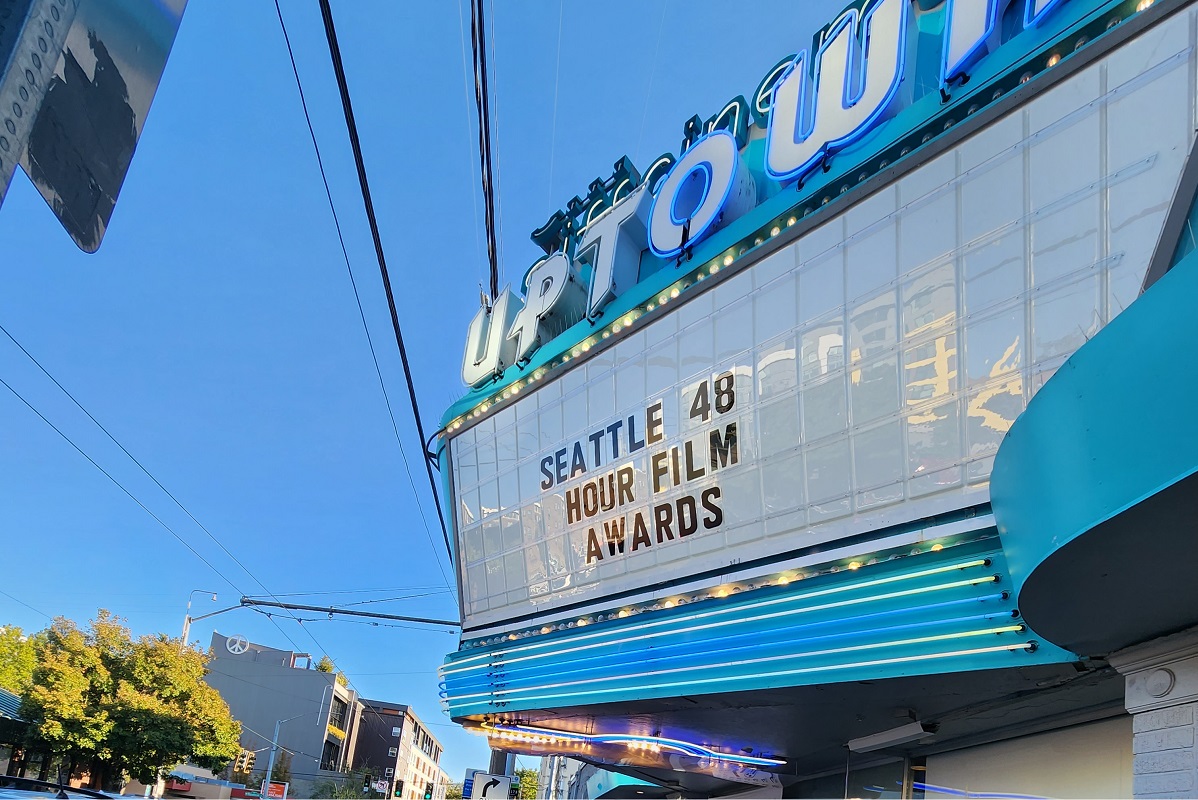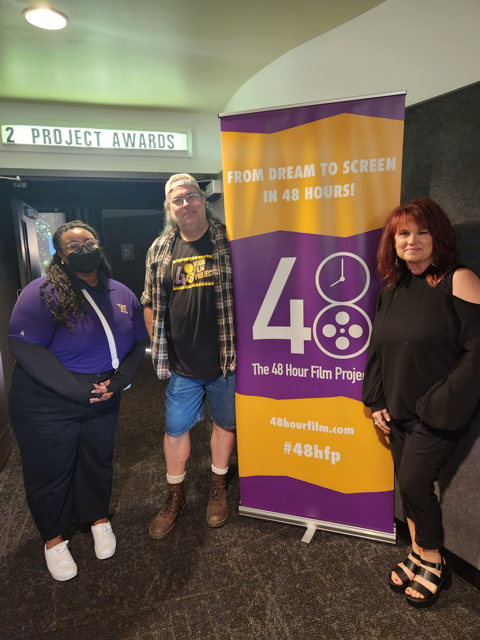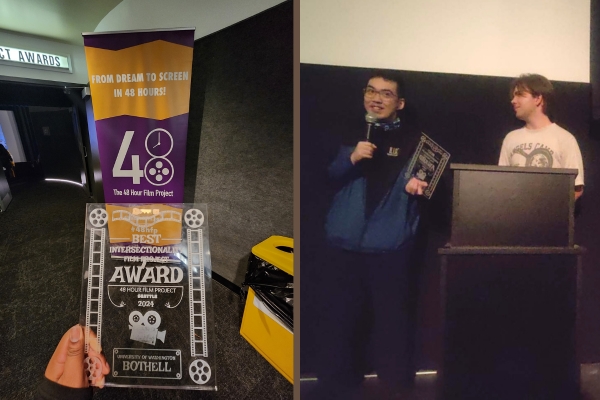Students Participate in the Seattle 48 Hour Film Project

To explore how race, gender, and sexuality are portrayed in various forms of media, students from BIS 162: Intersectionality of Race, Sex, and Gender in Film conducted analyses of diverse short films produced for the Seattle 48-Hour Film Project.
The 48 Hour Film Project is an international contest where participants are challenged to produce a short film within two days. Teams face various obstacles, from creating a film from nothing and improvising based on randomly assigned tasks, such as genre, character, and dialogue. At the end of the competition, all films are screened at a local theater, and awards are presented in diverse categories, including Best Film and Best Actor. Winning films may advance to compete in international events like the Filmapalooza Festival and could even be screened at prestigious festivals, such as the Cannes Film Festival’s Short Film Corner.

Dana Washington, the Community-Engaged Learning and Research (CELR) Manager, reached out to Kris Flink and Kris Nordenstrom, producers of the Seattle 48-Hour Film Project, seeking an opportunity for BIS 162 students to gain practical experience. The goal of this collaboration was to offer undergraduates hands-on learning in media analysis while deepening their understanding of race, gender, and sexuality in film.

The film “Brown Pony” by Team Rain at Daybreak was selected by students as the recipient of the UW Bothell Intersectionality in Film Award. The class praised the film’s memorable script and its thoughtful exploration of critical themes such as dependence and addiction, particularly across racial and gender lines, through a humorous satire of Seattle’s coffee culture. Students also appreciated the film’s nuanced portrayal of how personal and social issues affect individuals differently, depending on demographic variables and social positions.

